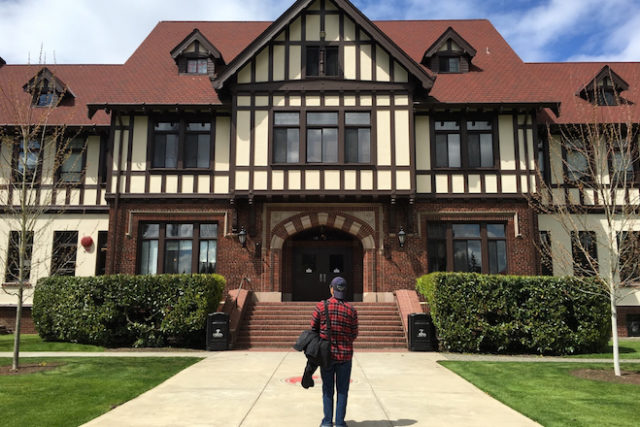
LATELY we have been visiting notable places of local Japanese- American history (e.g., June 1 issue). Today, we journey to the CRISTA Ministries in Shoreline. The campus is better known to JA readers as the former Firland Sanatorium, where “Nisei Daughter” author Monica Sone—and many other Nisei—stared down death from tuberculosis in their youths. Ms. Sone lived to tell the tale.
As the sanatorium chapter of Ms. Sone’s story is already familiar to many readers, today let us view it from a different perspective, that of author Betty MacDonald, from the pages of “The Plague and I” (1948).
While Ms. MacDonald gives her young Nisei roommate the pseudonym “Kimi,” it is in fact Monica (Itoi) Sone whom she is describing.
To lay the background, TB was widespread in U.S. society through World War II. As it is contagious, carriers were isolated from others.
In greater Seattle, Firland was the isolation location. At the time of MacDonald’s and Sone’s stay, it was pretty much “survival of the fittest.” According to CRISTA tour guide Mike Martin, who grew up on the grounds, 70% of the admitted patients died.
Ms. MacDonald describes the setting as follows:
“OUR NEW LITTLE ROOM was just large enough for our two beds, placed with the heads to the windows and tight against each wall, our bedside stands and chairs. By stretching only a little we could pass things to each other. The walls were the same mildewed green but there wasn’t much of them for the front of the tiny room was mostly doorway, the back was all windows and the walls, like screens, began a foot off the floor and were only about six feet high. They were apparently made out of some kind of light plywood, for I could hear the woman in the next room breathing. She rattled faintly when she breathed, like an Indian basket Mother used to have that had a hollow bottom filled with little dry seeds.
“It was strange to have anyone so close to you. When she took a drink of water I swallowed. When she turned the pages of a magazine it was as though I had turned them. “How cozy this is,” I thought and made motions to Kimi to show her how close the woman was. Kimi made motions back to show me that she also had an unseen, unknown person half an inch away and we smiled at each other delightedly.
“Our delight was short lived, however, for at suppertime my close companion, the Rattling Breather, coughed, gagged, cleared her throat, snuffled, snorted and spit all through supper… It was horrible.”
FIRLAND WAS CLOSED in 1947, when patients were transferred to a “new Firland” in north Seattle. That same year, antibiotics began to be used to treat TB. With the deaths or curing of most of the remaining patients, Firland closed its doors in 1973.
Since 1949, the CRISTA Ministries have been taking superb care of the historic Tudor-style buildings in Shoreline, which date from 1913. Re- purposing the main buildings as a school for wayward youth and for senior care, the ministry’s work on-site has expanded greatly to include senior independent living, a radio station, and World Concern, an international aid group.
P.S. A good opportunity to visit the former Firland campus would be to attend the book talk there by Paula Becker, author of “Looking for Betty MacDonald,” Monday, July 10, 6 p.m., CRISTA Ministries, 19303 Fremont Ave N, Shoreline.






